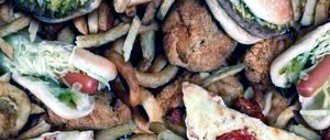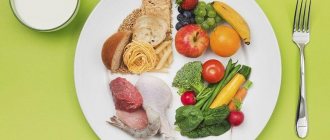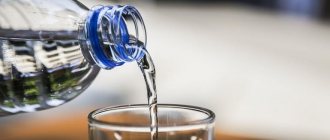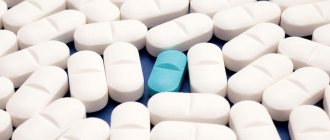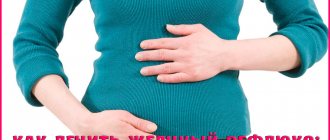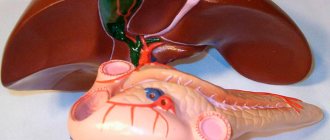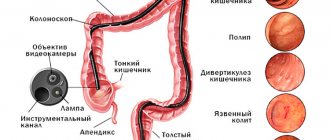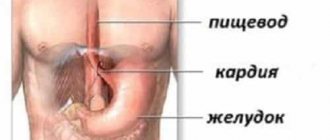The diet for fatty liver hepatosis must be followed as carefully as the use of medications prescribed by the attending physician. The replacement of organ cells with adipose tissue that occurs as a result of the disease can be slowed down and prevented by reviewing your diet. Consequences of fatty liver: cirrhosis, the occurrence of benign or malignant formations.
In the initial stage, fatty liver disease can be successfully treated using a diet prescribed by a doctor. A warning sign of the disease—a bitter taste in the mouth in the morning—should not be ignored. Seeing a doctor on time guarantees complete healing. Symptoms and treatment of an organ are inextricably linked - to determine treatment methods, the doctor is based on the individual characteristics of the patient’s body and the manifesting signs of the disease.
Authorized products
A special diet for hepatosis is the main condition for starting the healing process.
The diet is called Table No5, and includes the following list of permitted products:
- Light vegetable puree soups, vermicelli, rice, buckwheat first courses. All of them are crushed and ground, you can add a teaspoon of sour cream.
- Porridges are prepared from rice, oatmeal, semolina and buckwheat, mainly with water, sometimes with a drop of skim milk. Bulgur, couscous, and millet are also used.
- Meat products are boiled either in water or steamed. Used in the form of purees, meatballs and cutlets. Allowed types of meat include veal and rabbit. Poultry meat is selected based on the principle of minimal lipid content, the most common being turkey and chicken breasts. Use seafood and fish only of low-fat varieties with caution.
- Bakery products are only stale, without the addition of herbs, seeds and seasonings. You can eat wheat and rye bread, dry biscuits.
- Dairy products with a fat content of no more than 2%, excluding sour drinks. A little low-fat sour cream (a teaspoon), low-fat cottage cheese, and natural yoghurts (without fruit additives) are allowed. The consumption of milk and kefir is limited to two hundred milliliters.
- Vegetables allowed by the diet are subject to mandatory heat treatment, boiled or baked without oil. The basis of the diet is starchy vegetables: potatoes, carrots, cauliflower, zucchini, beets. Various casseroles and purees are made from them. Other types of vegetables are allowed in small quantities and no more than a couple of times a week: sweet peppers, cucumbers, beans in pods, broccoli and varieties of salads that have a mild taste.
- Infrequent consumption of only sweet types of fruit, preferably pre-baked, is allowed. These include ripe apples, bananas, prunes and dried apricots. Limited consumption of watermelon and melon is possible (in season).
- Whites of quail and chicken eggs, hard-boiled, less often steamed omelet.
- Farm unsalted butter (10 g per day) and refined types of vegetable oils, preferably olive (no more than 15 g).
- The hepatosis diet allows the consumption of natural, home-cooked snacks. These include squash caviar, vegetable salads from the permitted list, and meat soufflé. You can use yogurt dressings and a drop of soy sauce as a salad dressing.
- Allowed desserts: compote of dried fruits or fresh sweet fruits, marmalade, marshmallows, jelly, various types of preserves (jams, confitures). It is acceptable to use a small amount of honey. Oriental sweets only without nuts and flaxseeds.
Completely or partially prohibited products
All alcohol without exception! This also includes drinking non-alcoholic beer and energy drinks.
- Any types of coffee, drinks with the addition of cocoa beans, carbonated drinks, green tea, whey, chicory, all types of herbal teas, juices (both store-bought and freshly squeezed).
- Broths from meat and fish, any kind of okroshka (with whey, kefir or kvass).
- Mushrooms of all varieties and cooking methods.
- Legumes: beans, peas, lentils, chickpeas. Not only soups with the addition of these cereals are prohibited, but also porridge.
- Sorrel, bitter or sour greens (arugula, chicory). Vegetables with a spicy and pronounced taste, such as radish, asparagus, ginger root. Fresh tomatoes and, especially, tomato pastes.
- All types of offal are contraindicated: kidneys, liver, ventricles. Uncooked smoked sausages and various canned foods are prohibited.
- Any fatty fish: sturgeon, salmon, trout, catfish and others. Fish caviar, sushi, rolls and sashimi.
- A variety of rich pastries, as well as all fried flour products: pies, pancakes, crumpets.
- Dairy products with a fat content of more than two percent: cream, milk with high fat content, desserts, farm cottage cheese, sour cream.
- The vast majority of fresh, non-heat-treated berries and fruits are prohibited: melon, dates. Sour berries are not allowed - cranberries, lingonberries, citrus fruits and all varieties of grapes.
- Different types of nuts, seeds and desserts with their presence: muesli bars, kozinaki. Turkish Delight.
- Egg yolks, as well as fried eggs.
- A variety of animal fats (lard) and unrefined vegetable oils.
- Sauces that have a spicy taste and a fatty composition: mustard, wine vinegar and sauces based on it, adjika, horseradish, mayonnaise. The daily intake of table salt is limited; it is not recommended to consume more than 5 grams.
- Confectionery products, desserts with the addition of cocoa beans and butter cream. Chocolates, condensed milk, various cakes and pastries are prohibited.
Allowed dishes
The main thing that is important to observe at table 5 is the method of cooking. Since fried foods cannot be consumed, food can be baked, boiled, stewed, or cooked using a double boiler. This heat treatment is gentle and does not allow beneficial substances to be destroyed, forming carcinogens and cholesterol, which have a negative effect on liver function.
When prescribing 5 tables, it is best to prepare omelettes for breakfast, as well as cereals and porridges that contain fiber. Lunch and dinner should consist of several dishes to ensure that you receive the necessary calories, as well as proteins, fats and carbohydrates.
Diet menu for liver hepatosis
The dietary menu of Table No. 5 for hepatosis is very varied and balanced. The basic principle of a diet aimed at complete recovery is split meals in small portions; long breaks between meals are considered unacceptable. Food should be eaten warm and crushed.
The diet can significantly reduce the load on the liver and limits the intake of lipids. An important point is to drink clean drinking water, at least two liters per day. If patients are obese, the severity of the diet is varied by an endocrinologist.
| Breakfast | - oatmeal with milk - a piece of white bread - lightly brewed black tea |
| Lunch | - omelette of two chicken proteins - dried fruit compote |
| Dinner | — pureed vegetable soup with the addition of cauliflower — mashed potatoes with the addition of milk — steamed turkey cutlet |
| Afternoon snack | - cottage cheese casserole - dried fruit compote |
| Dinner | - zucchini and carrot puree - chicken meatballs |
| Before bedtime | - banana - natural yogurt |
| Breakfast | - oatmeal with water - two biscuits - apple marmalade - black tea |
| Lunch | - cottage cheese casserole - compote |
| Dinner | — vermicelli soup with added potatoes — chicken meatballs — boiled broccoli |
| Afternoon snack | - a glass of skim milk - an unsweetened cracker |
| Dinner | - boiled carrot and zucchini puree - chicken meatballs - a piece of rye bread - pear jelly |
| Before bedtime | - a glass of low-fat milk - a cracker |
| Breakfast | - milk semolina porridge - black tea - biscuits with pear jam |
| Lunch | — steam omelette — apple jelly |
| Dinner | — pureed zucchini and carrot soup — baked cod cutlet — mashed potatoes — compote |
| Afternoon snack | - banana - dried fruit compote |
| Dinner | — steamed chicken breast cutlet — boiled buckwheat — beet salad with prunes — compote |
| Before bedtime | - low-fat natural yogurt |
Let's determine the causes of the disease
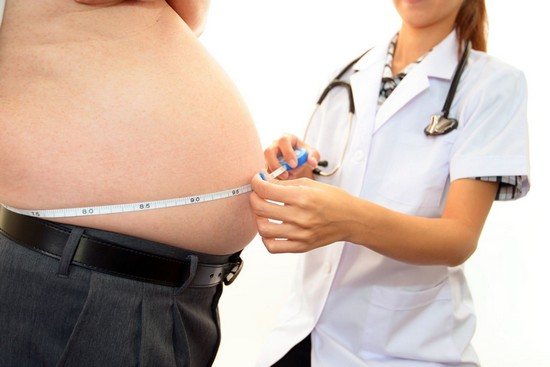
For the disease described, doctors prescribe diet 5. Fatty liver hepatosis can appear in any person for certain reasons. The following factors lead to obesity of liver cells:
- alcohol abuse;
- prolonged and uncontrolled use of pharmacological drugs;
- obesity;
- unbalanced diet.
If you promptly seek qualified medical help and change your diet, the processes occurring in the liver cells are completely reversible and absolutely safe for human health.
Otherwise, the disease will develop, leading to complicated consequences:
- chronic cholecystitis;
- gallstone pathology;
- diabetes mellitus;
- cirrhosis;
- malignant neoplasms;
- dysfunction of the digestive tract;
- weakened immunity;
- atherosclerosis;
- varicose veins.
Important! During the diet, liver cells are regenerated and fat disappears. The result is improved well-being and normalization of the functioning of all vital organs. Despite the fact that the liver is the only self-regenerating organ, its health cannot be neglected, otherwise irreversible processes may develop.
Nutritional recipes for liver hepatosis
Recipes for dietary dishes for hepatosis depend on the current stage of the disease and the degree of obesity of the patient. If you are not overweight, it is permissible to season your porridge with a small amount of butter or milk.
At the initial stage of treatment, food should be crushed with a blender.
For breakfast, it is better to eat oatmeal cooked in water. The main course is a variety of pureed soups with starchy vegetables. Porridges are cooked semi-liquid, with a minimum amount of salt. Among protein products, preference is given to poultry breasts - chicken and turkey. Desserts are limited or excluded altogether. Food should be eaten warm, no hot or cold dishes.
Zucchini soup
Boil potatoes, carrots and zucchini in lightly salted water until fully cooked. After boiling for five minutes, add some rice and cook until tender. Grind the resulting mixture using a blender.
If desired, add 1 teaspoon of low-fat sour cream to a serving of soup.
Turkey cutlets
Grind turkey breast, zucchini or zucchini with a meat grinder, add some carrots. Form minced meat into patties and bake in the oven.
Rice milk porridge with raisins
Boil the round rice until it is completely cooked, then add 100 ml of skim milk, one spoon of sugar, washed and steamed raisins. Continue cooking until it becomes a pudding.
What it is?
Fatty hepatosis (also known as fatty degeneration or fatty liver) is part of the group of reversible, dystrophic, chronic liver disease caused by the accumulation of large amounts of lipids. Currently, this disease is rapidly growing due to systematic nutritional disorders, as well as poor human lifestyle.
It is possible to stop the development of the disease by identifying the factors influencing the occurrence of fatty hepatosis. Changes for the better are observed after a month with timely treatment.
Pros and cons of the diet
| pros | minuses |
| - the diet minimizes the load on the diseased liver - relieves inflammation in the gastrointestinal tract - reduces the level of fat in the liver | - forced frequent cooking - the need to strictly adhere to the diet |
Diet price
The products used in the No5 diet are widespread and accessible to all segments of the population. Moreover, these products are basic for any type of nutrition.
Considering the fact that with hepatosis, portions should be small, you will have to reduce the amount of products purchased. Based on the above, we can confidently say that this diet is budget-friendly; the approximate cost of a weekly diet is 1000-1200 rubles per week.
Application of dietary nutrition number 5
You cannot cure a disease on your own with diet. It is used only in complex therapy together with medications. Dietary food is prescribed under number five for:
- cholecystitis;
- after hepatitis;
- with fatty hepatosis;
- in the postoperative period;
- with excess weight.
This type of nutrition gives good results in the treatment of hay fever. If you adhere to this diet, starting from the first days of March, you can reduce the likelihood of exacerbations of allergies during flowering plants. This diet can even be used for pregnant women. Over long periods of time, women often develop swelling and weight continuously increases, which has a bad effect on well-being and the cardiovascular system. The diet is aimed at reducing cholesterol in the blood and salt deposits in muscles and joints.
Diet No. 5 is often used by women who care about their appearance and health. With this diet you can lose a couple of extra pounds. Such weight loss will not harm, but on the contrary, it will only improve the health of the body by removing waste and toxins.
